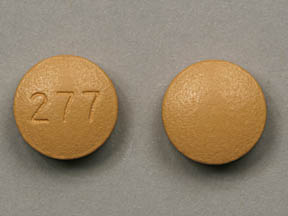
Januvia Coupons & Savings Card – Discount Prices from $336.39
My prescription
Edit
100MG, Januvia (30 Tablets)
Select pharmacy

CVS
$350.20
COUPON PRICE
Walmart
$336.39
COUPON PRICE
Walgreens
$338.37
COUPON PRICE
Albertsons
$344.52
COUPON PRICEFree Januvia Savings Card

Walmart
$336.39
Show this coupon to your pharmacist
ID
LH73745E38
PCN
CHIPPO
BIN
019876
GRP
LHX
This coupon is not insurance
Related gliptins prescriptions
More prescriptions for diabetes type 2
Related gliptins prescriptions
More prescriptions for diabetes type 2
Price history for Januvia
30 Tablets, 100MG
Average retail price for Januvia
Average SaveHealth price for Januvia
Our price history data is based on aggregated prescription data collected from participating pharmacies in America. Our prescription data updates daily to reflect the latest price changes. If you notice a missing data point, it means there wasn't sufficient data available to generate a monetary value for that date.
*Retail prices are based on pharmacy claims data, and may not be accurate when we don't have enough claims.
Januvia dosage forms
Dosage Quantity Price from Per unit 25MG 7 Tablets $80.49 $11.50 25MG 30 Tablets $338.37 $11.28 25MG 60 Tablets $674.74 $11.25 25MG 90 Tablets $1011.11 $11.23 25MG 180 Tablets $2011.23 $11.17 50MG 7 Tablets $80.49 $11.50 50MG 30 Tablets $338.37 $11.28 50MG 60 Tablets $674.74 $11.25 50MG 90 Tablets $1011.11 $11.23 50MG 180 Tablets $2011.23 $11.17
| Dosage | Quantity | Price from | Per unit |
|---|---|---|---|
| 25MG | 7 Tablets | $80.49 | $11.50 |
| 25MG | 30 Tablets | $338.37 | $11.28 |
| 25MG | 60 Tablets | $674.74 | $11.25 |
| 25MG | 90 Tablets | $1011.11 | $11.23 |
| 25MG | 180 Tablets | $2011.23 | $11.17 |
| 50MG | 7 Tablets | $80.49 | $11.50 |
| 50MG | 30 Tablets | $338.37 | $11.28 |
| 50MG | 60 Tablets | $674.74 | $11.25 |
| 50MG | 90 Tablets | $1011.11 | $11.23 |
| 50MG | 180 Tablets | $2011.23 | $11.17 |
| 100MG | 30 Tablets | $336.39 | $11.21 |
| 100MG | 5 Tablets | $56.91 | $11.38 |
| 100MG | 7 Tablets | $79.27 | $11.32 |
| 100MG | 15 Tablets | $168.70 | $11.25 |
| 100MG | 90 Tablets | $1007.15 | $11.19 |
Januvia Warnings
The following safety information outlines key warnings related to the use of Januvia (sitagliptin). It is important to carefully consider these potential risks and consult your healthcare provider with any concerns or questions.
Pancreatitis Risk: Although rare, some individuals using Januvia (sitagliptin) have reported inflammation of the pancreas, known as pancreatitis. While the direct link to the medication is uncertain, it is crucial to discontinue use and contact your healthcare provider immediately if you notice symptoms such as upper stomach pain, fever, nausea, or vomiting.
Heart Failure Concerns: While it is not definitively established that Januvia (sitagliptin) increases the risk of heart failure, similar medications have been associated with this condition. Discuss any existing heart or kidney conditions with your healthcare provider before beginning treatment. Seek immediate medical attention if you experience symptoms like difficulty breathing, fatigue, bodily swelling, or unexpected weight gain.
Kidney Health: There have been reports of sudden kidney injury in some individuals taking Januvia (sitagliptin), occasionally necessitating dialysis. Your healthcare provider may conduct blood tests to monitor kidney function before and during treatment, especially if you have pre-existing kidney issues. Notify your provider if you notice a decrease in urination.
Allergic Reactions: Rarely, Januvia (sitagliptin) can trigger severe allergic reactions, particularly in individuals with a history of allergies to DPP-4 inhibitors or "gliptins," such as Tradjenta (linagliptin) or Nesina (alogliptin). Symptoms may include rash, skin blistering, swelling, breathing difficulties, and dizziness. If these occur, stop the medication and seek medical assistance immediately.
Joint Pain: Some individuals on Januvia (sitagliptin) or similar diabetes medications have experienced significant joint pain, which can occur at any time during treatment. The pain typically subsides after discontinuation. If you experience joint discomfort, consult your healthcare provider promptly.
Severe Skin Reactions: In rare cases, users may develop an itchy, blistering rash known as bullous pemphigoid. These symptoms usually resolve upon stopping the medication. Report any itchy skin, blistering, or sores to your healthcare provider immediately and discontinue use.
There are no specific contraindications listed for Januvia (sitagliptin). However, it is vital to discuss your full medical history with your healthcare provider to ensure this medication is appropriate for you.
Januvia Side Effects
Sitagliptin is a medication that can lead to various side effects, some more common and mild, while others are rare but serious. Commonly, individuals may experience symptoms similar to a cold, such as a runny nose and sore throat, affecting about 5% of users. Headaches have also been reported and typically do not require urgent medical attention unless persistent or worsening. Low blood sugar, or hypoglycemia, is a potential risk, especially when sitagliptin is used alongside other diabetes medications. Symptoms to watch for include sudden sweating, shaking, fast heartbeat, hunger, blurred vision, dizziness, or tingling in the hands or feet. It is advisable to carry glucose tablets, or quickly consume a sugary food or drink if such symptoms arise. High blood sugar, or hyperglycemia, may present as increased thirst or urination and should be reported to a healthcare provider. Serious, yet rare, side effects necessitate immediate medical attention. These include signs of pancreatitis, such as severe stomach pain, nausea, or vomiting. Additionally, severe allergic reactions, characterized by rash, swelling, or difficulty breathing, require urgent care. Sudden kidney problems may manifest as changes in urination, swelling in the legs or ankles, fatigue, or confusion, and should be addressed promptly. While a severe allergic reaction is rare, any signs such as rash, itching, swelling, severe dizziness, or trouble breathing require immediate medical intervention. If any other side effects are noticed, consulting a healthcare professional is recommended to ensure safety and appropriate management.
Januvia Interactions
When taking Januvia (Sitagliptin), it is crucial to inform your doctor and pharmacist about any other medications or supplements you are using, including those obtained over-the-counter, as well as vitamins and herbal products. This ensures safe management of potential drug interactions.
Beta-blockers, such as metoprolol, Propranolol, and Timolol (used in glaucoma eye drops), can interfere with the typical awareness of a rapid or pounding heartbeat associated with low blood sugar (hypoglycemia). However, they do not alter other symptoms like dizziness, hunger, or sweating. It is important to monitor your blood sugar levels closely and discuss any significant changes with your healthcare provider, who may need to adjust your diabetes management plan, including your medication, exercise, or diet.
Additionally, Januvia may interact with a range of other medications. Some interactions might increase the risk of side effects but could still be necessary for your treatment, requiring a possible adjustment of dosages or usage frequency by your doctor. Medications that may interact include various antibiotics and antidiabetic drugs such as Acarbose, Metformin, and Glimepiride, among others. If you are prescribed Januvia alongside any of these medications, your healthcare provider will carefully assess and manage these interactions for your safety.
What are the problems with Januvia?
Januvia, a medication used to manage type 2 diabetes, may have several potential side effects and concerns. Some common side effects include upper respiratory tract infections, headaches, and gastrointestinal issues such as nausea or diarrhea. More serious but less common side effects can include pancreatitis, severe joint pain, and allergic reactions. There is also a potential risk of hypoglycemia, especially when used in combination with other diabetes medications. Patients should discuss any concerns with their healthcare provider to ensure Januvia is appropriate for their condition.
What organs does Januvia affect?
Januvia primarily affects the pancreas and the liver. It works by enhancing the body's natural ability to control blood sugar levels, primarily by increasing insulin production in the pancreas and decreasing glucose production in the liver.
Which is safer, Januvia or Jardiance?
The safety of Januvia (sitagliptin) versus Jardiance (empagliflozin) can depend on individual patient factors, including medical history, other medications being taken, and specific health conditions. Both medications are used to manage type 2 diabetes but belong to different drug classes and have different mechanisms of action.Januvia is a DPP-4 inhibitor, while Jardiance is an SGLT2 inhibitor. Each has its own side effect profile. For instance, Januvia may be associated with risks such as pancreatitis and joint pain, while Jardiance may increase the risk of urinary tract infections and dehydration.A healthcare provider should evaluate the patient's overall health, kidney function, cardiovascular status, and other relevant factors to determine which medication is safer for them. It is important for patients to discuss their specific situation with their healthcare provider to make an informed decision.
What is the difference between metformin and Januvia?
Metformin and Januvia are both medications used to manage type 2 diabetes, but they work in different ways. Metformin primarily decreases glucose production in the liver and improves insulin sensitivity, helping the body use insulin more effectively. Januvia, on the other hand, is a DPP-4 inhibitor that works by increasing the levels of incretin hormones, which help to regulate blood sugar by increasing insulin release and decreasing glucagon levels. While both medications aim to control blood sugar levels, their mechanisms of action and potential side effects differ.
Is Januvia a high risk medication?
Januvia is not generally considered a high-risk medication. It is a prescription medication used to manage blood sugar levels in adults with type 2 diabetes. However, like all medications, it can have side effects and potential interactions with other drugs. It is important for patients to follow their healthcare provider's instructions and report any unusual symptoms. Regular monitoring and consultations with a healthcare provider can help manage any risks associated with its use.
